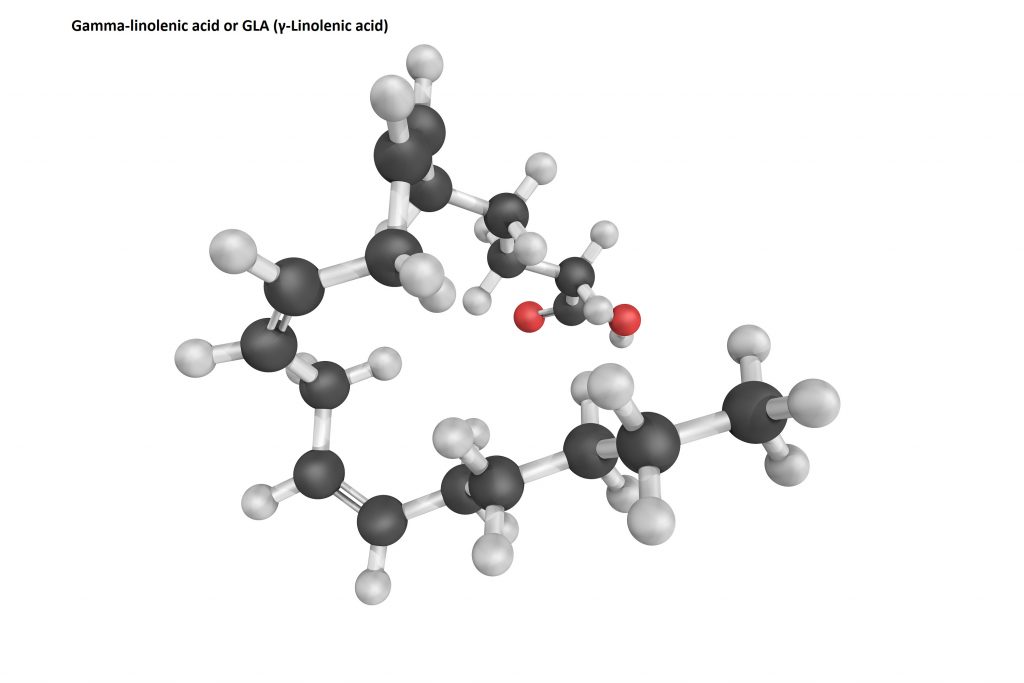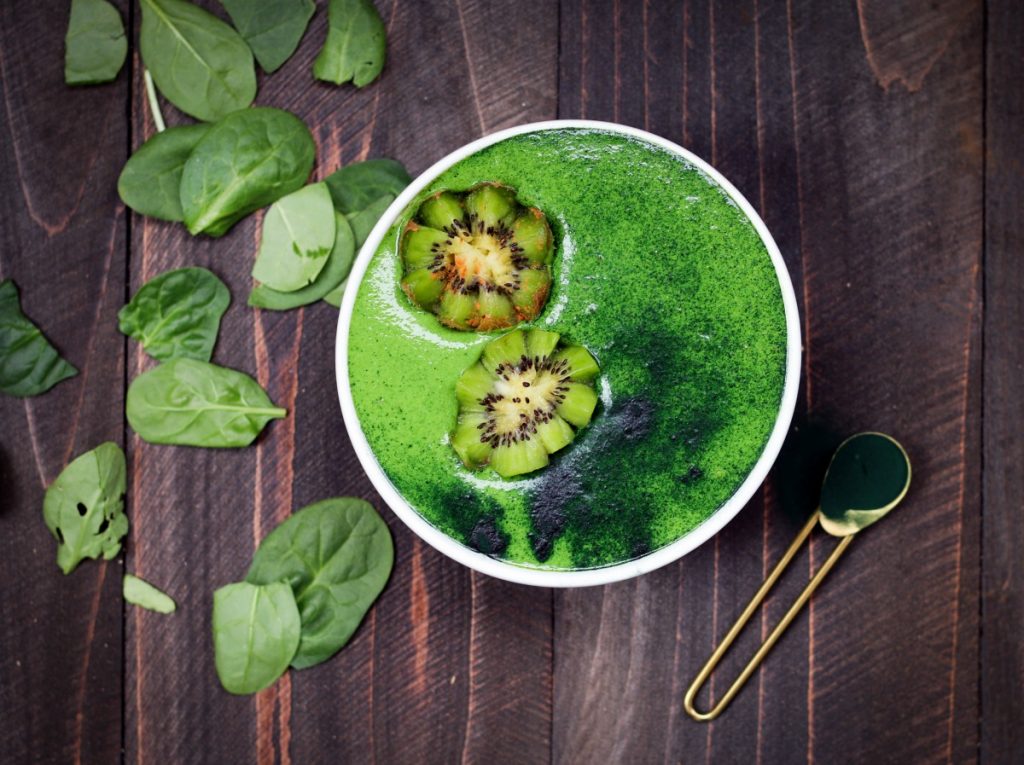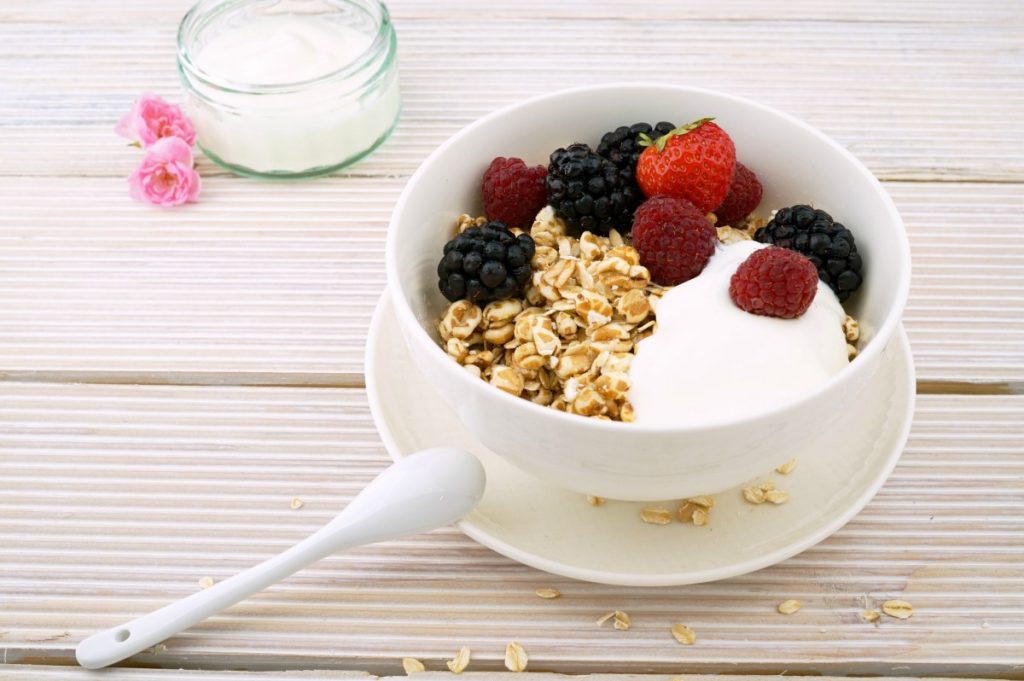Published on April 19, 2018. Last Updated on July 20, 2021.
Gamma linoleic acid (GLA) is an unsaturated Omega 6 fatty acid from plant sources such as borage seeds, primrose, hemp seeds, oats, barley, and spirulina. Compared to other fatty acids, the human body metabolizes GLA through a different set of processes. This produces breakdown compounds that have been shown to fight inflammation and even potentially improve other areas of health. Scientists are now finding new forms of evidence that support the use of gamma-linoleic acid for hair growth.

Studies on the Benefits of Gamma Linoleic Acid for Hair Loss
There are many purported ingredients and treatments which are intended to help hair grow. But only a subset of them is supported through research studies. Reading about controlled experiments provides greater insight into how a particular compound like gamma-linoleic acid might offer new hope for hair loss sufferers.

Many of these experiments involve gamma-linoleic acid for hair growth in a combination of ingredients. In other words, such studies do not attribute this fatty acid to be the sole agent to the hair growth results reported. However, the role of GLA as a co-contributor to statistically significant improvements is still worth considering for its ability to treat hair loss.
Scientists Create A Gamma Linoleic Acid Hair Treatment With Herbs and Coconut Oil
In one research study by B.Muhammed, A. Amin, R. Abu Bakar, R. designed an experiment to observe the effectiveness of coconut oil mixed with different herbs as a treatment for hair loss (1). They prepared four variations. These included:
- Coconut oil alone
- Coconut oil mixed with Nigella Sativa
- Coconut oil mixed with Aleurites Moluccana
- Coconut oil mixed with both Nigella Sativa and Aleurites Moluccana
The research group tested these mixtures on three male subjects with shaved heads. Their scalps were marked and divided into five regions.
The scientists looked for improved growth and hair length signs by taking measurements every three days for four months.
Out of the four different formulation groups, the coconut oil mixed with Nigella Sativa produced the best results. The Nigella Sativa herb possesses rich stores of GLA. The researchers believe that the gamma-linoleic acid for hair growth worked by promoting blood flow to the scalp.

Gamma Linoleic Acid Benefits for Hair Follicles as a Skin Penetrant
In a 2012 research study, scientists were interested in using niosomes to deliver a natural DHT inhibitor (Oryza sativa rice bran, OSF3) to hair follicles as a topical treatment to improve hair growth (2). They prepared the niosomes using different fatty acids, including gamma-linoleic acid for hair growth and linoleic acid and oleic acid. These scientists used the highest concentrations of all three constituents.
The testing for this study was done on male subjects suffering from androgenic alopecia. In the end, the researchers found the best results using niosomes as a delivery method for the OSF3. By contrast, the samples of the Oryza sativa, which were not administered using the transdermal vehicles, failed to perform as effectively.
Since gamma-linoleic acid was used along with other fatty acids, it was not the sole contributor to the improved skin penetration. However, its contribution to the overall results is a finding worth noting for the continued research and development of topical hair loss treatments. Future research may clarify the benefits of topical hair care systems with carefully formulated gamma-linoleic acid concentrations.

Researchers Observe the Metabolites of Gamma Linoleic Acid for Hair Loss and Other Health Conditions.
The 5a-reductase enzyme breaks testosterone down to form a byproduct known as DHT (dihydrotestosterone). This dynamic plays a central role in many disorders throughout the body, including androgenic alopecia hair loss, prostate cancer, acne, and female hirsutism.
The medical community has been interested in treating these conditions using various chemical compounds to block the 5a enzyme and lower DHT levels. Although this has largely been achieved through synthetic drugs, they have been known to incur various forms of toxic side effects in other areas of human physiology. Due to the need for safer alternatives, researchers have been looking into the possibility of using natural inhibitors of 5a-reductase.
Pham and V.A. AZiboh observed the effect of gamma-linoleic acid breakdown products on rat prostate cancer cells (3). These metabolites included:
- 15s hydroxyelcosatrienoic acid
- 15s lipoxygenase
Namely, they looked at benign hyperplastic cells and malignant tumorigenic cells derived from rat models with prostate cancer.
They also compared the metabolite effects derived from another fatty acid, eicosapentaenoic acid (EPA), 15S-hydroxyeicosapentaenoic acid.
The scientists were interested in how well these metabolites were able to inhibit the 5a-reductase enzyme. They measured the concentrations of DHT that resulted from the two treatments.
Surprisingly, they found that the metabolites from gamma-linoleic acid inhibited 5a-reductase activity by 80%. By contrast, the metabolite from eicosapentaenoic acid only reduced the 5a enzyme’s activity by 55%.
Based on these findings, the benefits of gamma-linolenic acid for hair growth may be an effective natural approach to lowering DHT levels in men suffering from pattern baldness.
Topical Gamma Linoleic Acid for Hair Loss May Work As A DHT Inhibitor
T Liang and S. Liao studied the topical use of gamma-linoleic acid on hamsters to see if this delivery method could lower DHT levels (4).
Hamster flank organ growth can be observed on the sides of the body above the hind legs. This is an androgen-dependent phenomenon. It tends to display itself as an increase in the area size of a pigmented macule, a flat discolored region.
The researchers observed the effects of topically applying androgens to this region in castrated hamsters. This resulted in a larger and darker macule which indicated growth of the flank organ.
Next, they applied 5a- DHT topically to the same region. This also produced a larger and darker macule or increase in the size of the flank organ. ‘
As the third phase of their study, the scientists applied gamma-linoleic acid topically. This suppressed the dark and expanded macule region.
The researchers also applied the gamma-linoleic acid topically to the flank organ region in normal hamsters that had not been castrated. This also suppressed growth.
Based on these observations, the researchers concluded that the size increase of the hamster flank organ depends on the formation of DHT. The fact that gamma-linoleic acid was able to suppress the macule discoloration in castrated and normal hamsters supports its ability to block the 5a-reductase enzyme, converting testosterone to DHT.
The studies discussed above provide positive support for the benefits of gamma-linolenic acid to help improve hair loss conditions. They suggest that this fatty acid improves blood circulation, improves skin penetration for topical hair growth treatments, and may also work as a natural DHT inhibitor. Further studies on humans and the use of GLA exclusively are needed to form more solid conclusions on its ability to improve various types of hair loss issues.
Other Benefits of Gamma Linolenic Acid
Aside from hair benefits, gamma-linolenic acid is used to treat nerve issues for people with diabetes — also known as diabetic neuropathy. Such patients can consume the acid to relieve symptoms while preventing nerve pain and damage.
Although there are limited studies to support these claims fully, some researchers found that gamma-linolenic acid supports breast cancer recovery.
It also benefits other health conditions, including high blood pressure and cholesterol levels, heart diseases, and depression.
Side Effects and Precautions
Gamma-linolenic acid is usually safe to consume in normal amounts (no more than 2.8 grams per day) for adults. However, it may cause side effects for some, such as diarrhea and intestinal gas. Thus, it is recommended to take the substance for a short term.
Studies also show that the acid can lead to blood clotting; therefore, individuals undergoing surgery are recommended to avoid consumption to prevent bruising or bleeding concerns.
Due to the lack of evidence surrounding the safety of this acid during pregnancy, pregnant women and breastfeeding mothers are recommended to avoid consumption.
Safety Profile
According to the Environmental Working Group, gamma-linolenic acid shows little to no risk in promoting cancer development, toxins, or allergies. The organization gave the acid a 1 (green) score on its 10-point system, indicating low suspicion of toxicity.
FAQ – Gamma Linoleic Acid for Hair Growth
If I want to create my own gamma-linoleic acid hair treatment through diet, what are some natural sources?
The studies above only suggest that GLA has the potential to improve hair loss conditions. Yet, many variables need to be investigated more closely through further research. Surely, the intake of fatty acid through diet would be one area. It is not clear how effective or what intake amounts would produce significant growth. If you are interested in improving your GLA intake, this should be done for general health reasons. Besides the foods listed earlier, other good sources include oatmeal and black currant seed oil.

What are the benefits of gamma-linolenic acid for other areas of health besides hair loss?
Gamma linoleic acid is widely known for its anti-inflammatory properties. Other purported health benefits include improved skin hydration and elasticity, weight loss, and even increased energy. However, many of these claims are anecdotal and may not be supported by research studies.
Should I increase my intake of gamma-linolenic acid for hair loss? Will this actually block DHT and help me grow new hair?
The research studies above suggest a high potential for GLA to improve hair loss conditions. However, they don’t discuss the effects of consuming this fatty acid through diet. As GLA passes through the intestinal tract, it is unclear how the compound is affected by digestive processes to benefit the follicles. Increasing your intake of Gamma linoleic acid for hair growth should be done to benefit your body on a holistic level, not to target the hair follicles.
References
- Muhammed, A. Amin, R. Abu Bakar, R. Jaafar, The Effectiveness of Coconut Oil Mixed with Herbs to Promote Hair Growth, 2004, ijee.in; 1(3)
- A.Manosroi, W.Ruksiriwanich, M.Abe, W.Manosroi, J.Manosroi, Transfollicular enhancement of gel containing cationic niosomes loaded with unsaturated fatty acids in rice (Oryza sativa) bran semi-purified fraction, 2012, EuroJ, 81 (2): 303-13
- H.Pham, V. AZiboh, 5α-Reductase-catalyzed conversion of testosterone to dihydrotestosterone is increased in prostatic adenocarcinoma cells: suppression by 15-lipoxygenase metabolites of gamma-linolenic and eicosapentaenoic acids, 2002, J. of Steroid Bio, 82 (4-5), 393-400
- T.Liang S.Liao Growth Suppression of Hamster Flank Organs by Topical Application of γ-Linolenic and Other Fatty Acid Inhibitors of 5α-Reductase, 1997, J.InvestDerm:109 (2), 152-57
- Sanusi Umar, Marissa J. Carter, “A Multimodal Hair-Loss Treatment Strategy Using a New Topical Phytoactive Formulation: A Report of Five Cases,” Case Reports in Dermatological Medicine, vol. 2021, Article ID 6659943, 12 pages
Further Reading
Learn about the beauty benefits of oleic acid
Simple ingredients you can use to create your own hair masks
